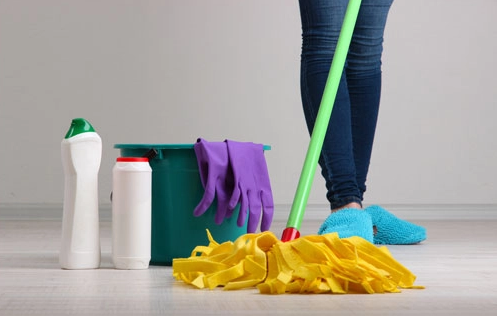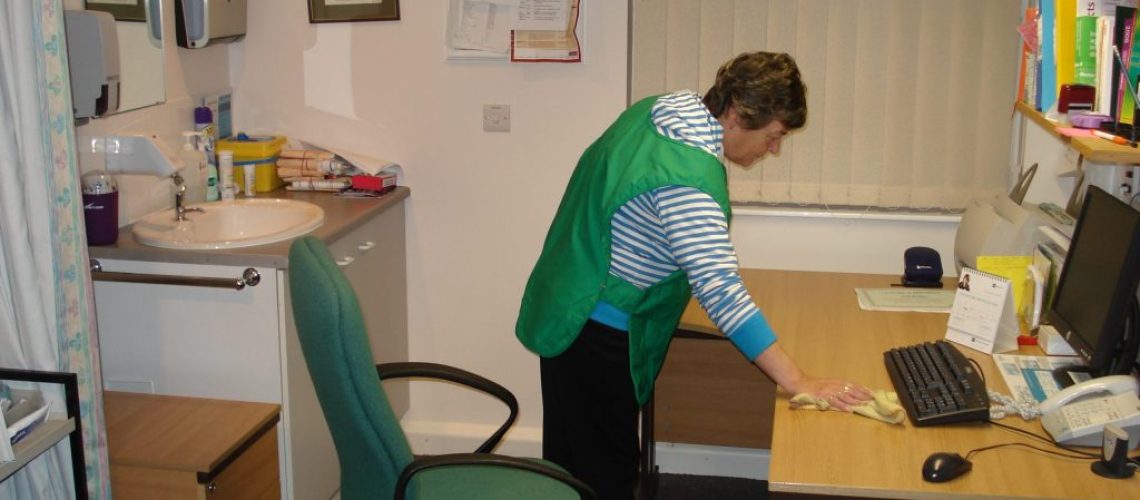When it comes to running a successful dental practice, clinical expertise is only part of the equation. The moment a patient walks through your door, they’re already forming opinions—not just about your skills, but about the environment you’ve created. Cleanliness isn’t just about hygiene compliance; it’s a reflection of your clinic’s professionalism and care. A spotless practice builds trust, enhances reputation, and helps patients feel at ease, which is vital in a setting where many already arrive feeling nervous. Creating a wonderful impression through cleanliness is about much more than appearances—it’s about patient confidence and long-term success.
Focus on First Impressions: Reception and Waiting Area Cleanliness
You only get one chance to make a first impression, and for dental clinics, that first impression is often formed before your team has even greeted a patient. The reception and waiting area are silent ambassadors of your clinic’s standards. Patients are naturally observant when they’re waiting—dust on skirting boards, smudged glass doors, or a cluttered reception desk can subconsciously create doubt about how well the clinical areas are maintained. Keeping the front-of-house fresh, spotless, and calm not only reassures your patients but also sets a professional tone for the whole visit.
Make Entry Points Shine
Your clinic’s entrance is where the first judgement forms, often before your reception team has said a word. Fingerprints on glass doors, water stains on windows, or a grubby welcome mat can undo the best patient care inside. Daily attention to entrance areas, along with professional glass cleaning every week, ensures that the first view patients have of your practice is crisp and clean. Don’t forget signage either—dirty or faded signs don’t inspire confidence and can make your business look neglected, even if your clinical work is top-notch.
Comfortable and Spotless Seating
While your patients wait, they’re interacting with the environment—leaning back on chairs, flicking through magazines, or placing bags on side tables. If those chairs have stains, crumbs, or scuffed legs, that experience quickly shifts from professional to uncomfortable. Upholstery should be vacuumed regularly, while leather or vinyl seating needs disinfecting at least daily. Magazines, if used, should be fresh and neatly arranged—not months old or curling at the edges. Keeping waiting areas neat, modern, and regularly sanitised helps reinforce that your attention to detail extends beyond the dental chair.

Prioritise Hygiene in Treatment Rooms
If your reception sets the stage, the treatment room is the main event—and this is where hygiene matters. Patients are particularly sensitive to cleanliness in clinical spaces because it directly relates to their safety. Even if your sterilisation procedures behind the scenes are world-class, visible untidiness—like dust in corners or clutter on countertops—can undermine confidence. Clean treatment rooms don’t just meet regulations; they help put anxious patients at ease, making them more likely to trust your care and return for future treatments.
Daily Disinfection of Equipment and Surfaces
Every dental chair, light fitting, tray, and surface should be cleaned after each patient, not just at the start and end of the day. Using hospital-grade disinfectants suitable for healthcare settings, your team should routinely wipe down all contact points, including drawer handles and control panels on dental units. It’s the details that matter here—even things like light switches or tap handles should be disinfected regularly, as they’re easy sources of contamination. Visible cleanliness matched with clinical sterility creates an environment where patients feel safe and well cared for.
Floor to Ceiling Clean: Don’t Overlook Hidden Dirt
While equipment and surfaces usually get good attention, it’s easy to overlook areas like skirting boards, corners, vents, and light fittings. Over time, dust and grime build up, even in practices that look immaculate at first glance. Floors should be swept and mopped daily, but adding weekly checks for vents and high corners prevents dirt from creeping into sight. Professional cleaning teams can handle these harder-to-reach areas, freeing your staff to focus on providing patient care. By maintaining the same standards for hidden spaces as you do for dental equipment, you show your patients that nothing is left to chance.
Pay Special Attention to Restrooms
Often overlooked but critical, the condition of your clinic’s restrooms says a lot about how seriously you take cleanliness overall. Patients may not consciously notice a clean restroom, but they will notice an unclean one—and it can colour their perception of the whole practice. Restrooms should reflect the same care and professionalism as your treatment rooms, with spotless floors, gleaming fixtures, and well-stocked supplies. No one wants to use a restroom with empty soap dispensers or untidy cubicles, especially in a healthcare environment where hygiene is paramount.
Stocked, Sanitised, and Smelling Fresh
Clean restrooms start with a reliable daily maintenance routine. Floors need to be swept and mopped, toilets scrubbed, and sinks wiped regularly throughout the day. Keeping the space dry, particularly around sinks, helps prevent slip hazards and stops mould or mildew from forming. Stock levels should be checked multiple times a day—running out of soap or toilet tissue is a simple mistake that leaves a negative impression. Adding air fresheners or odour-neutralising sprays helps maintain a pleasant atmosphere, reassuring patients that hygiene is taken seriously from start to finish.
Go Beyond Basics: Professional Deep Cleaning
While daily cleaning keeps things ticking over, deep cleaning is what truly maintains hygiene over the long term. Professional cleaners can tackle scale build-up on taps, tile grout stains, and harder-to-reach areas like behind toilets or under sinks. Scheduling regular professional cleans—monthly or bi-weekly, depending on patient volume—helps your clinic stay ahead of any hygiene issues before they start affecting patient impressions. A clear, written checklist for restroom standards also ensures your in-house staff know exactly what’s expected every single day.
Create a Clean Culture: Staff and Patient Involvement
Cleanliness in a dental clinic should never fall solely on cleaning staff—it’s a shared responsibility. Creating a workplace culture that values tidiness and hygiene means everyone on your team actively contributes to maintaining high standards. When patients see that all staff, from receptionists to clinicians, take cleanliness seriously, it reinforces the professionalism of the whole clinic. A clean culture doesn’t just protect health—it elevates the reputation of your brand and builds stronger relationships with your patients.
Train Your Team for Spotless Standards
Staff should be trained not only in clinical hygiene protocols but also in general cleanliness around the clinic. This means everything from washing hands regularly to wiping down their workstations and keeping break areas tidy. Uniform presentation also matters; crumpled or stained clothing undermines the sense of cleanliness, even if surfaces are spotless. By embedding cleanliness into team training and holding regular refresher sessions, you can ensure that high standards are maintained consistently, not just when inspections are due.
Encourage Patient Hygiene Participation
Your patients also play a role in maintaining a clean environment, and small encouragements can make a big difference. Providing hand sanitiser stations at key points around the clinic—such as by the entrance, waiting room, and treatment rooms—makes it easy for patients to maintain their hygiene. Clear, friendly signage reminding patients to use tissues, dispose of rubbish properly, or wash their hands after using the toilet helps reinforce good habits. By encouraging shared responsibility, you help create an atmosphere where everyone feels invested in the cleanliness and safety of the space.
A clean dental clinic is about much more than just appearances—it’s a direct reflection of your professionalism, care, and commitment to patient wellbeing. From the moment a patient walks through the door to the second they leave, every space they encounter should speak of high standards and attention to detail. By focusing on key areas like reception, treatment rooms, restrooms, and encouraging a team-wide commitment to cleanliness, you’re not only creating a wonderful first impression—you’re building lasting trust. In today’s world, patients expect more than excellent dental care; they expect a spotless, safe environment, too. When your clinic looks and feels clean, it sends a clear message: here, their health and comfort truly come first.






